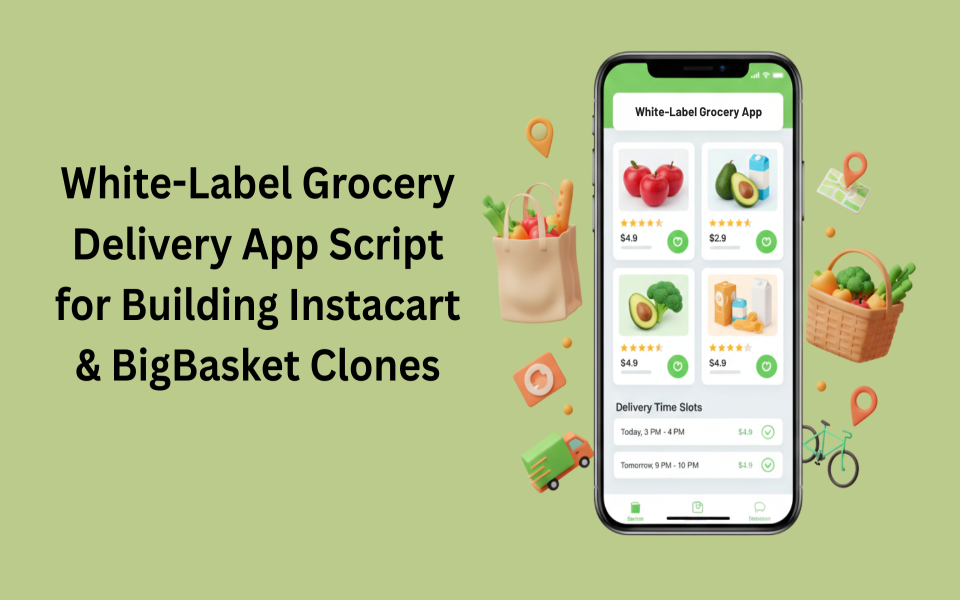
Delivered Duty Paid DDP Shipping Hassle-Free Global Trade
- Insta Wireless
- Business
- 2025-10-25 17:51:04
- 2122K
In the complex world of international logistics, one shipping term simplifies trade for importers more than any other — Delivered Duty Paid (DDP).
When you’re buying or selling goods across borders, understanding who bears responsibility for costs, risks, and customs is essential. The Incoterms® (International Commercial Terms) define these responsibilities, and DDP (Delivered Duty Paid) stands out as one of the most comprehensive and buyer-friendly terms.
Under a DDP agreement, the seller takes full responsibility for delivering goods to the buyer’s location — covering shipping, insurance, customs clearance, import duties, and taxes.
In simple words: the buyer just receives the goods, while the seller manages everything.
This article explores everything you need to know about DDP shipping — from its definition and advantages to how it works in eCommerce, 3PL operations, and global supply chain management.
1. What is Delivered Duty Paid (DDP)?
Delivered Duty Paid (DDP) is one of the Incoterms® 2020 rules published by the International Chamber of Commerce (ICC).
It means the seller is responsible for delivering the goods to the buyer’s designated location, covering all costs and risks until the shipment reaches the buyer.
In essence:
- The seller handles everything — including export clearance, freight, import clearance, duties, and delivery.
- The buyer only receives the goods at their door or warehouse.
DDP in Simple Terms
If you purchase goods under DDP, the seller will:
- Produce and package the goods.
- Arrange international shipping.
- Pay freight costs, customs duties, and taxes.
- Handle import clearance.
- Deliver goods to your location — all costs included.
You can think of DDP as a door-to-door global delivery service, where the seller assumes all financial and logistical responsibility.
2. DDP vs Other Incoterms
To understand DDP better, let’s compare it with other popular shipping terms:
| Incoterm | Responsibility of Seller | Responsibility of Buyer |
|---|---|---|
| EXW (Ex Works) | Makes goods available at seller’s location | Handles everything from pickup to import |
| FOB (Free On Board) | Delivers goods to port of shipment | Handles shipping, import, and delivery |
| CIF (Cost, Insurance & Freight) | Pays for shipping and insurance up to destination port | Handles customs and inland delivery |
| DAP (Delivered at Place) | Delivers to buyer’s country, excluding import duties | Pays import duties and taxes |
| DDP (Delivered Duty Paid) | Handles everything, including import duties and delivery | Only receives goods |
As shown, DDP places the maximum responsibility on the seller — making it the most buyer-friendly term in international trade.
3. The Process of DDP Shipping: Step-by-Step
A typical DDP shipping process follows several key stages:
Step 1: Seller Prepares the Shipment
The seller packages, labels, and documents the goods according to international shipping standards.
Step 2: Export Customs Clearance
The seller handles all export documentation, including:
- Commercial invoice
- Packing list
- Certificate of origin
- Export declaration
Step 3: Freight Forwarding
The seller books international transport — by air, sea, or courier — and arranges insurance coverage.
Step 4: Import Customs Clearance
The seller’s representative or 3PL partner handles import documentation, customs duties, and VAT or GST payments in the buyer’s country.
Step 5: Final Delivery
After clearing customs, the goods are delivered directly to the buyer’s door or warehouse — ready for use or resale.
In this process, the buyer’s role is entirely passive — they simply receive the goods and confirm delivery.
4. Key Responsibilities in DDP Shipping
Let’s break down who is responsible for what in DDP:
| Activity | Seller’s Responsibility | Buyer’s Responsibility |
|---|---|---|
| Packaging | ✅ | ❌ |
| Export Customs Clearance | ✅ | ❌ |
| Freight Costs | ✅ | ❌ |
| Insurance | ✅ | ❌ |
| Import Customs Clearance | ✅ | ❌ |
| Duties & Taxes | ✅ | ❌ |
| Delivery to Final Destination | ✅ | ❌ |
| Unloading | ❌ | ✅ |
The seller carries all risks and costs until delivery is complete. However, unloading at the buyer’s premises is usually the buyer’s task.
5. Advantages of Delivered Duty Paid (DDP)
DDP offers multiple benefits, especially for buyers and global eCommerce operations.
For Buyers
- No hidden costs: You get a single, all-inclusive price.
- Stress-free import process: The seller manages customs and compliance.
- Predictable delivery timelines: The seller controls the full shipping chain.
- Improved cash flow: No need to prepay import duties.
- Ideal for beginners: Perfect for companies new to international trade.
For Sellers
- Enhanced competitiveness: Buyers prefer all-inclusive pricing.
- Customer satisfaction: Simplified delivery improves trust and repeat business.
- Brand control: The seller ensures consistent packaging and delivery quality.
- Better logistics visibility: End-to-end control helps optimize performance.
For businesses working with 3PL providers, DDP simplifies the logistics process by allowing professionals to handle all transportation, duty payments, and deliveries seamlessly.
6. Disadvantages and Risks of DDP
Despite its benefits, DDP shipping also comes with challenges — primarily for the seller, who bears most of the responsibility.
a. High Cost for Seller
Covering duties, taxes, and transport to the buyer’s country can significantly increase seller expenses.
b. Customs Complexity
If the seller is not familiar with the buyer’s import laws, the process can lead to fines or delays.
c. Tax Registration Issues
In some countries, the seller might need a local tax ID (VAT/GST) to clear customs legally.
d. Risk of Miscommunication
Incorrect valuation or paperwork can cause clearance issues and extra charges.
e. Cash Flow Pressure
Since sellers pay all upfront costs, they face heavier financial commitments before receiving payment.
Therefore, while DDP favors buyers, sellers must plan carefully and work with experienced freight forwarders or 3PL partners to ensure smooth execution.
7. DDP in E-Commerce and Global Fulfillment
In modern eCommerce, Delivered Duty Paid shipping has become increasingly popular — especially for cross-border transactions.
Why DDP Works for eCommerce
- Online shoppers want fast, all-inclusive pricing.
- No one likes surprise customs fees at delivery.
- Sellers can build brand reputation by simplifying the buying experience.
Platforms like Shopify, Amazon, eBay, AliExpress, and Alibaba often encourage DDP shipping for international sellers because it:
- Improves conversion rates.
- Reduces cart abandonment.
- Creates predictable customer experiences.
Example
A Shopify seller in China shipping to U.S. buyers via DDP ensures the customer pays a single price — inclusive of product, freight, and taxes — with no hidden fees at checkout.
8. DDP vs DAP: The Key Difference
Many confuse Delivered Duty Paid (DDP) with Delivered at Place (DAP).
Here’s the main difference:
| Term | Who Pays Duties/Taxes? |
|---|---|
| DDP | Seller pays all import duties and taxes |
| DAP | Buyer pays import duties and taxes |
So, while DDP is completely buyer-friendly, DAP splits the financial responsibility.
If you want your customers to enjoy a frictionless experience, DDP is the superior option.
9. Role of 3PL Companies in DDP Shipping
Third-Party Logistics (3PL) providers like Coastal Distributions Group or Max 3PL play a crucial role in executing DDP shipments effectively.
How 3PLs Support DDP
- Handle customs documentation for both export and import
- Calculate and prepay duties, tariffs, and VAT
- Offer last-mile delivery to customer doorsteps
- Provide warehouse storage for cross-border inventory
- Manage returns and reverse logistics
By partnering with a reliable 3PL, sellers can simplify their international fulfillment process while maintaining transparency and compliance.
10. Industries That Benefit from DDP Shipping
DDP shipping is especially beneficial in sectors where end-customer experience and delivery reliability are crucial:
- eCommerce and Retail – Online brands shipping internationally.
- Manufacturing – Equipment suppliers delivering across borders.
- Pharmaceuticals – Time-sensitive products needing full logistical control.
- Electronics – High-value goods requiring secure, tracked delivery.
- Automotive Parts – Global supply chains needing consistent delivery timelines.
In each case, DDP ensures predictability, transparency, and trust between seller and buyer.
11. Compliance and Documentation in DDP Shipping
Proper documentation is essential for smooth customs clearance under DDP.
Common Documents Include:
- Commercial Invoice
- Packing List
- Bill of Lading or Air Waybill
- Certificate of Origin
- Import License (if required)
- Customs Value Declaration
- Proof of Duty Payment
Having an experienced logistics provider ensures all documentation meets the importing country’s legal standards.
12. Technology and DDP: The Digital Revolution
Modern technology has revolutionized how DDP shipments are managed.
Through digital logistics platforms, sellers can now:
- Generate electronic customs forms.
- Track shipments in real time.
- Automatically calculate duties and taxes.
- Provide customers with accurate delivery timelines.
AI-driven systems and blockchain-based tracking are further enhancing transparency, accuracy, and efficiency in international shipping.
13. When Should You Use DDP?
DDP shipping is ideal in these scenarios:
- You want to offer a frictionless buying experience for your customers.
- You have experienced logistics partners who can manage customs efficiently.
- You ship high-value or sensitive goods.
- You want to expand globally and build a strong reputation in new markets.
However, if you’re a small exporter without customs knowledge or local representation in the buyer’s country, DAP or CIF may be safer alternatives.
14. Real-World Example of DDP Shipping
Let’s say a Pakistani textile manufacturer sells apparel to a retail store in Houston, USA, under DDP terms.
Here’s how it works:
- The manufacturer produces and packages the apparel.
- Their freight forwarder arranges air shipment to the U.S.
- The forwarder handles U.S. customs clearance, duties, and taxes.
- The apparel is delivered directly to the Houston store — with no extra cost to the buyer.
The U.S. retailer simply signs for delivery — enjoying a zero-hassle import experience.
15. The Future of DDP in Global Logistics
With globalization and cross-border eCommerce growing rapidly, DDP shipping is becoming the new norm for international trade.
As trade barriers reduce and logistics networks become more integrated, DDP will continue to:
- Simplify international transactions.
- Encourage global small businesses to expand abroad.
- Offer seamless cross-border fulfillment through digital automation.
Future DDP solutions will leverage AI, cloud-based customs systems, and blockchain for transparent, instant, and cost-efficient shipping experiences worldwide.
Conclusion
Delivered Duty Paid (DDP) is more than a shipping term — it’s a strategic advantage in global commerce.
It empowers businesses to expand internationally while offering customers a stress-free buying experience.
For importers, DDP means simplicity and predictability.
For sellers, it builds trust and brand value — especially when supported by professional 3PL partners.
By partnering with experienced logistics providers, businesses can manage customs, duties, and deliveries effectively — ensuring every product reaches its destination safely, quickly, and transparently.
Whether you’re an eCommerce brand, manufacturer, or wholesaler, understanding and implementing Delivered Duty Paid (DDP) can revolutionize your cross-border logistics strategy — helping your business grow in the interconnected world of modern trade.
Leave a Reply
Please login to post a comment.












0 Comments